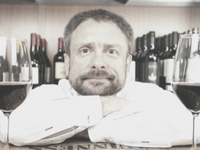by Michael Palij MW
Barolo is a wine that has perhaps endured more injurious innovation than any other; its aesthetic pendulum swings desperately from rotary fermenters through new French oak to botte and back again.
It’s a question any business owner would ask: how can we improve what we do? Innovation is essential and, in some industries, the rate of change is fundamental to manufacturing. In computing, for example, Moore’s Law suggests that the speed of our microchips should double every two years. This transformation has, in turn, fuelled the rise of Google, Tesla and Spotify, none of which darkened the Dow even 25 years ago.
In other industries, however, change comes to pass at a more leisurely pace. Take agriculture, for example. We’ve had domesticated animals and cereal crops for thousands of years. Sure, yields have increased, mechanisation has appeared, and standards of welfare have changed but, at its heart, it’s still wheat, barley, pigs and cows. We may have Momofoku, Huel, and molecular gastronomy but caloric intake and hospitality endure fundamentally constant. So why is innovation bi-modal, either a lightning strike or a glacier?
The answer is that advances are greatest in those disciplines where science has the upper hand. Faster, stronger, and lighter are much easier to measure than tastier, braver and more beautiful. To mention nothing of truth. Innovation, therefore, remains a double-edged sword. On the one hand we have armies of the brightest minds (in an academic sense) testing hypotheses in white-coat laboratories and, on the other, painters, chefs and designers iconoclastically banging at the boundaries of the aesthetic norm.
Wine has always kept a foot in both camps. The science behind pasteurisation, temperature control, closures, pesticides and microbiological stability would be unrecognisable to a winemaker of yesteryear. A welcome glass of the stuff, however, is as relevant in today’s world as it was 5,000 years ago in Mesopotamia.
This brings us neatly on to Barolo
Barolo is a wine that has perhaps endured more injurious innovation than any other; its aesthetic pendulum swings desperately from rotary fermenters through new French oak to bottle and back again. In the 1990s, ‘tradition’ was a dirty word in Piemonte. Producers used to chainsaw their parents’ large oak barrels and plant flowers in them to signal their Bolshevik modernism. Styles vacillated wildly. Families split. Critics called foul and 100 points in the same breath.
Nebbiolo, one must understand, is cursed with a natural deficiency in anthocyanins, the compounds responsible for the deep colour of grapes such as Merlot and Malbec. In a post-Thatcherite world of ‘more is more who in their right mind would drink effete, garnet wines redolent of hay, wild strawberries and liquorice?
No one, it seems, apart from Osvaldo and Bruno Cabutto, the brothers behind what must count as the most exciting viticultural discovery since Pompei. Theirs is a cellar devoid of fashion yet brimming with more than a century of history ever since the founder, Domenico Cabutto, purchased the cellar and 20 ha of the most prestigious vineyards in the DOCG directly from the Marquis Gastone di Mirafiori, nephew of the King of Italy, Vittorio Emanuele II.

Authenticity is in this cellar’s DNA and each activity is driven by a single aim: to meticulously vinify grapes from a collection of carefully studied vineyards that, together, combine to make something unique: Cabutto Barolo. There is only one Cabutto Barolo. It’s a reflection of grape, vineyard, lengthy maceration and even longer ageing in large old oak allied to the deep understanding of the precise characteristics of each vineyard. Imagine having 100 years to get to know your garden.
Nothing at Cabutto shouts a desire to either embrace fashion or maintain the status quo. This is not feel-good wine for those needing simple answers to complex questions. It’s a synthesis of endless technical fettling underpinned by a profound understanding of what constitutes this family’s ambition. Tradition here is about duty and obligation rather than a set of formulae handed down through intransigent generations.
The colour is unapologetic pale garnet. The nose is haunting, complex and enveloping, with dried roses and violets, raspberries and wild strawberries, blackberry jam, marmalade and nutmeg, black pepper, liquorice, tobacco, leather and smoke. In the mouth, it’s distinctly tannic with a vein of dusty truculence alongside the velvety fruit. It’s complete, unapologetic, aloof and yet welcoming. It needs to be partnered with Fassone beef, roasts, well-hung game, and hard, well-ripened cheeses. Open it when you need the wine to play second fiddle to food and to friendship and be no less diminished by that role.
There is no end of Barolos that are darker or oakier or that have achieved a higher score than Cabutto. Those wines represent the new face of Barolo, inevitably made by men and women tired of ‘farming’ and keen to take their place on an international stage amidst the super-stars of Bordeaux and Burgundy. But Barolo isn’t Bordeaux or Burgundy. It’s Barolo. And the winemakers determined to change Barolo’s DNA are the scientists of wine, rather than the artists. Armed with the latest white-coat technology they wrest Mother Nature into submission rather than helping Her express that which is unique to a particular grape, place and vintage.
For better or worse, there is no right answer in this debate. The enjoyment of wine remains both highly personal and a desperately subjective pursuit and there is certainly no room for snobbery in our industry. But there is always room for just a little tradition.

Michael Palij MW, of Winetraders, is the third Canadian Master of Wine. He specializes in Italian wines and has introduced Opimian to some truly special producers such as Cabutto, Giovanna Tantini and Cantina Clavesana.

